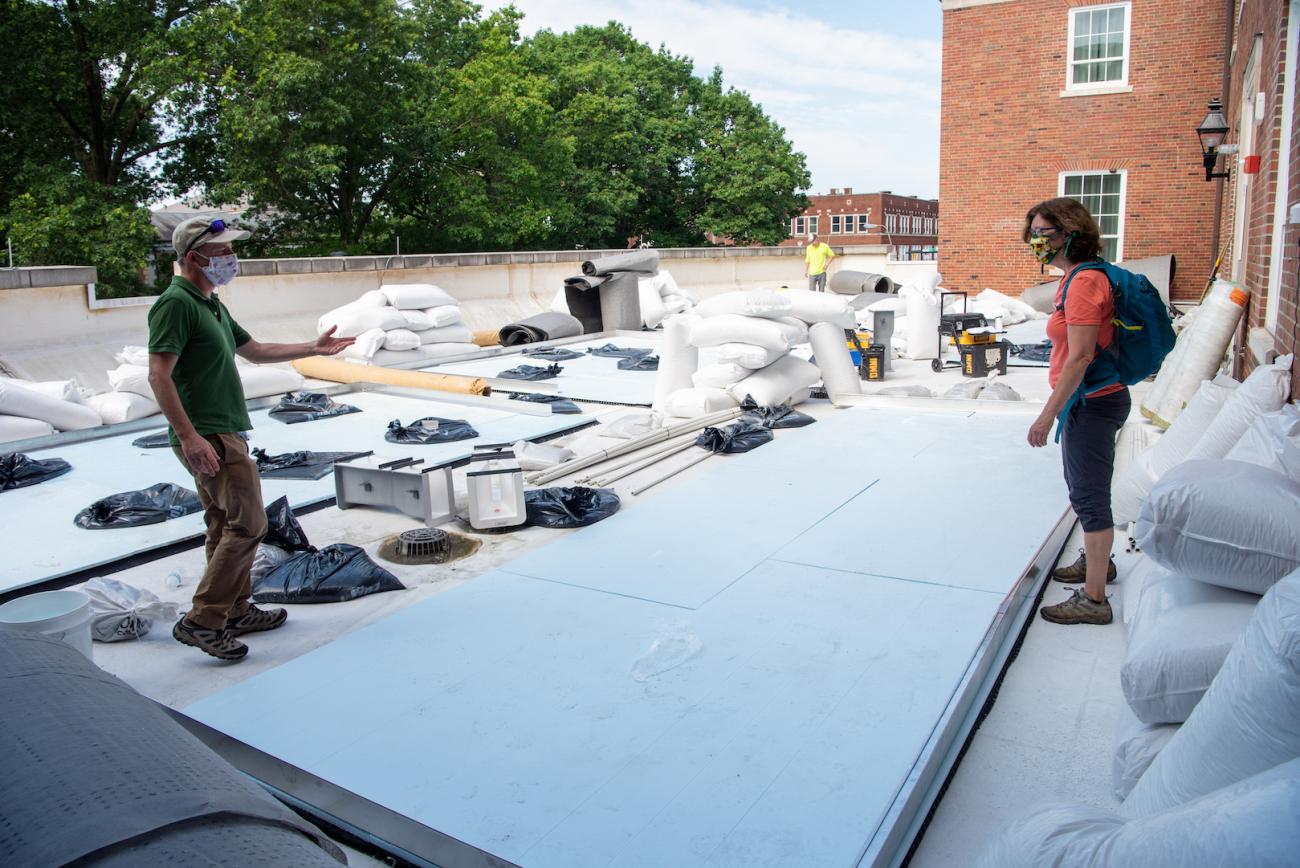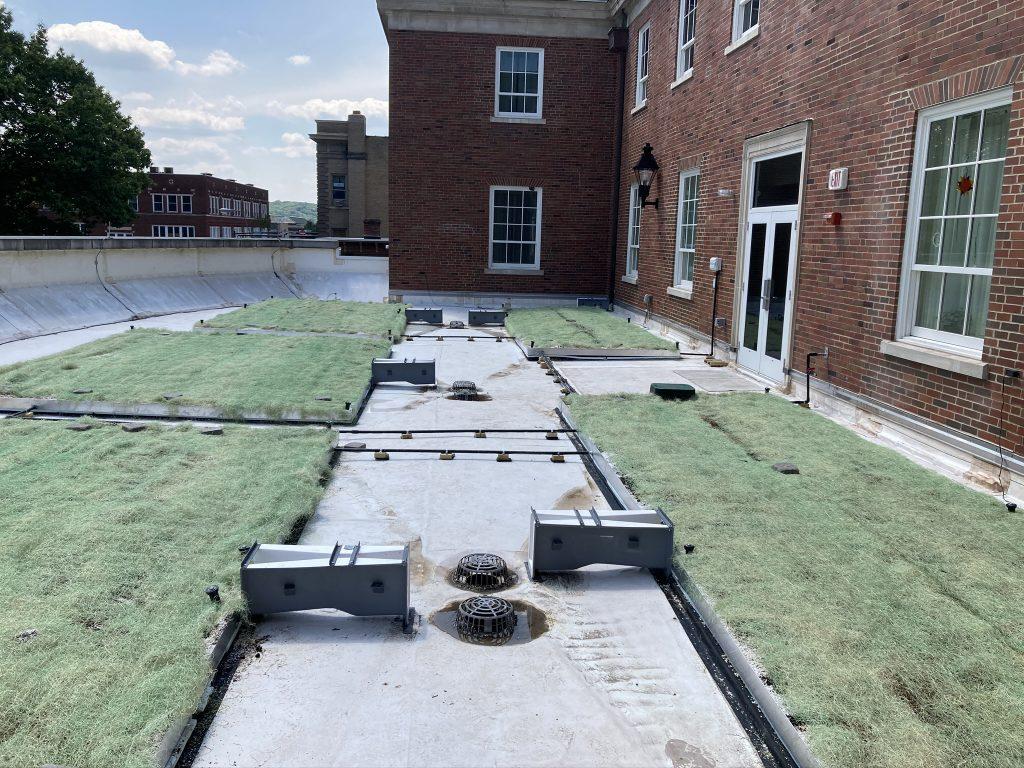
Schoonover Green Roof installation completed

Schoonover Center is a little greener after the installation of a green roof over the main lobby was completed on July 2. The green roof has added benefits by supporting student learning and engaging the OHIO community in a sustainability mission.
Green roofs are a type of green infrastructure that are designed for stormwater mitigation, slowing down water runoff and helping to prevent flooding. Green roofs have lots of other benefits that arise from a vegetated system – cleaner water, increased diversity of living organisms, temperature reduction, protection of the roof from UV rays and carbon sequestration (when carbon dioxide is converted to plant tissue).
Construction began in March with the addition of safety features, electrical outlets and plumbing to the roof. After a delay, the project resumed in June with roofing contractor K&W setting pads for drainage and protection of the roof membrane.
Contractor Omni Ecosystems then installed the five sections of the green roof beginning June 28. The company used a soil engineered to be more lightweight than most soils, so the green roof can be four inches deep instead of two, said Dr. Kim Thompson, an associate professor of instruction in the Department of Environmental and Plant Biology in the College of Arts and Sciences. That will allow for some larger plants.

“We’ve been really excited about this project, and it’s finally taking to the roof. It’s encouraging that, even in this time, this is going to be a real benefit for the students and our university,” Thompson said.
The roof was funded through a series of grants, including an Academic Accelerator grant for $256,000 and an 1804 grant which is supporting a graduate assistant. Besides the aesthetic appeal, the green roof will serve as a home to research projects, supported by equipment to track temperature, ultraviolet radiation, air quality, biodiversity, water runoff and water quality.
Dr. David Rosenthal, an associate professor in the Department of Environmental and Plant Biology, will monitor plant establishment and biodiversity with several PACE and other undergraduate researchers in his lab. Once plants are established, Rosenthal will study how the green roof community affects carbon, water and energy exchange with the surrounding environment.
Flumes were also set up to help researchers measure the amount of water that is released from the beds after a heavy rain. These are a unique installation on a green roof and illustrate the research potential of this system. Professors and Drs. Natalie Kruse-Daniels, Julio Arauz and Amy Lynch will study water flow and quality from the green roof compared to an unplanted rooftop.

Students have gotten involved in the project, from working to create a website, gathering data, producing news items, writing lesson plans related to green roofs and conducting a biodiversity study. A new student organization, The Green Initiative, launched in March with more than 50 members to promote this project and explore other green infrastructure projects around Athens County. The Green Initiative launched Instagram (@greeninitiativeou) and Twitter (@ougreenteam) feeds to promote the roof, as well.
The completion of the green roof offers even more opportunities for involvement. Video streaming, data sharing and outreach connections will help make the rooftop a valuable university resource for faculty and students.
A 360-degree camera project is being set up to help make the roof more accessible, as the roof is only rated to hold a handful of people at a time. These will be used to create virtual reality experiences, as well.
Altogether, faculty members from the College of Arts and Sciences, Scripps College of Communication, Voinovich School of Leadership and Public Affairs, Russ College of Engineering and Technology and Patton College of Education have all been involved in the project.
